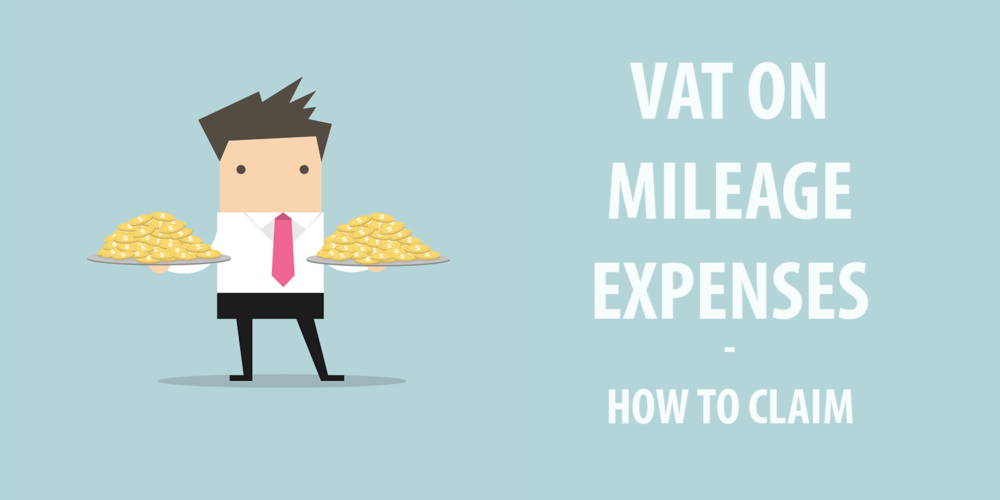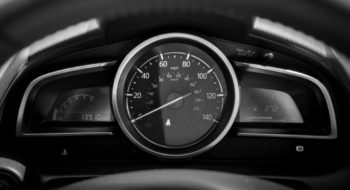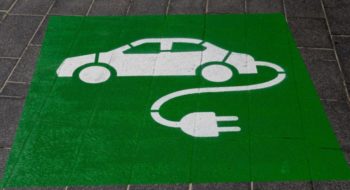If you are driving your own car for business and your business is VAT registered then you can claim VAT on mileage expenses.
If you are an employer and your staff use their own cars, you can claim VAT on their mileage expenses.
Your business must be VAT registered. If you are on the VAT Flat Rate Scheme, then you cannot claim the VAT on the mileage expenses.
Mileage Allowance
HMRC allows drivers to claim up to 45p per mile, for upto 10,000 miles, when driving their own vehicle for business. Read more in our blog on Claiming Mileage Expenses.
The mileage allowance covers the cost of
- Fuel
- Wear and tear on the vehicle, insurance and vehicle tax.

The Fuel Portion and HMRC Advisory Fuel Rates
The cost of the fuel is defined by HMRC’s Advisory Fuel Rates. For example, the cost of fuel when driving a 2.5 litre diesel car is 18p per mile. Hence, you can claim back 3p per mile in VAT, which is 1/6th of the 18p fuel portion.
The table below shows the current Advisory Fuel Rates. You can look up the size of your car’s engine in the Engine Size (cylinder capacity) column.
| Engine Size | Petrol – pence per mile | LPG – pence per mile |
|---|---|---|
| 1400cc or less | 13 pence | 11 pence |
| 1401cc to 2000cc | 15 pence | 13 pence |
| Over 2000cc | 24 pence | 21 pence |
| Engine Size | Diesel – pence per mile |
|---|---|
| 1600cc or less | 12 pence |
| 1601cc to 2000cc | 14 pence |
| Over 2000cc | 18 pence |
The Advisory Electric Rate is 7p per mile (from 1st September to 30th November 2024).
HMRC updates the Advisory Fuel Rates and Advisory Electric Rates every 3 months.
Calculating VAT on Mileage
How to calculate VAT on mileage
- Calculate Fuel Portion
Fuel portion = advisory fuel rate x business miles claimed
- Calculate VAT
VAT = Fuel portion / 6
- Combine Formula
VAT on mileage = (advisory fuel rate x business miles claimed) / 6
For example, the Advisory Fuel Rate for a 2.5 litre petrol car is 24p per mile, if the mileage travelled is 3,000 miles (and the VAT rate is 20%), then the VAT to be claimed is 24p * 3,000 / 6 = £120.00.
Special Considerations
Electric Cars
If you charge your car electric car at home, bear in mind the domestic rate of VAT is 5%, not 20%. The VAT on electricity used at charging points is 20%. Electric cars use the Advisory Electric Rate, not the Advisory Fuel Rate.
Hybrid Vehicles
Hybrid vehicles use the Advisory Fuel Rate, not the Advisory Electric Rate. Hence, a 2 litre petrol hybrid will use the Advisory Fuel Rate for petrol cars.
Motorbikes
You can reclaim VAT on mileage expenses for motorbikes too.

Documents Required
- Fuel receipts are required and the VAT in the fuel receipts must cover the amount of VAT claimed;
- The date on the fuel receipts must be before the date of the mileage expense claim;
- A record of the trips made for business is required, showing the date, reason, from and to locations and distance travelled;
Common Questions (FAQs)
Only receipts for fuel purchased in the UK can be used to reclaim VAT input tax.You cannot use fuel receipts from other countries, including those in the EU. The UK is defined as England, Northern Ireland, Scotland and the Isle of Man. Note the Channel Islands are not in the UK.
You should only claim VAT on mileage if you have supporting fuel receipts.
Yes, but the staff must be employees, not contract staff employed by a different business. And the employer pays staff a mileage allowance for driving their own cars for business purposes – this must cover the fuel portion.
Yes, HMRC’s document VIT55400 states that businesses can use Advisory Fuel Rates, or similar data from AA and RAC, to calculate the fuel portion of mileage expenses for VAT claims. This applies when using Approved Mileage Rates and covers personal vehicles used for business, not just company cars.
Tips for Maximising VAT Claims
- Use a mileage tracking app to provide you with a log of trips made and to calculation the VAT portion of the mileage claim;
- Consider a mileage tracking app that updates the Advisory Fuel Rates when they change, so you don’t need to;
- If you manage the rates yourself, think about signing up for our blog. We will email you when the Advisory Fuel Rates change;
- Keeping fuel receipts is a chore, if you can, keep them with your business accounts so they are always at hand. E.g. in the Xero File area. If you use an accounting app, make sure it doesn’t treat the fuel receipt as an expense.
Thank you to Sarah Bradford, director of Writetax Ltd, and HMRC VAT Written Enquiries Team for their assistance writing this article.
Tripcatcher calculates the VAT on mileage and calculates the value of fuel receipts required. There is a 14 day free trial too.


